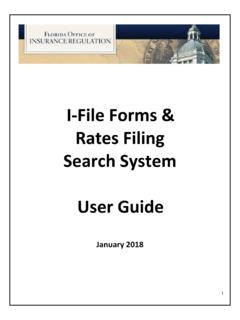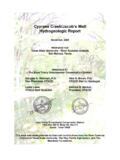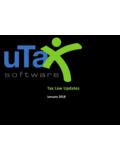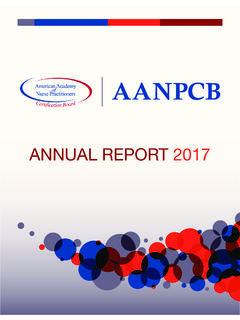Transcription of PRECALCULUS - michigan.gov
1 1 Credit (optional) PRECALCULUS -ICHIGAN -ERIT #URRICULUMC ourse/Credit RequirementsMichigan State Board of EducationKathleen N. Straus, President Bloomfi eld TownshipJohn C. austin , Vice President Ann ArborCarolyn L. Curtin, SecretaryEvartMarianne Yared McGuire, TreasurerDetroitNancy Danhof, NASBE DelegateEast LansingElizabeth W. BauerBirminghamReginald M. TurnerDetroitEileen Lappin WeiserAnn ArborGovernor Jennifer M. GranholmEx Offi cioMichael P. Flanagan, ChairmanSuperintendent of Public InstructionEx Offi cioJeremy M. Hughes, Superintendent /Chief Academic Offi cerDr. Yvonne Caamal Canul, DirectorOffi ce of School ImprovementMDE StaffMICHIGAN MERIT CURRICULUM COURSE/CREDIT REQUIREMENTS WelcomeThis guide was developed to assist teachers in successfullyimplementing the michigan Merit Curriculum. The identifi ed contentexpectations and guidelines provide a successful framework for designing curriculum, assessments and relevant learning experiences for the collaborative efforts of Governor Jennifer M.
2 Granholm, the State Board of Education, and the State Legislature, these landmark state graduation requirements are being implemented to give michigan students the knowledge and skills to succeed in the 21st Century and drive michigan s economic success in the global economy. Working together, teachers can explore varied pathways to help students demonstrate profi ciency in meeting the content expectations and Unit DesignOne of the ultimate goals of teaching is for students to acquire transferable knowledge. To accomplish this, learning needs to result in a deep understanding of content and mastery level of skills. As educational designers, teachers must use both the art and the science of teaching. In planning coherent, rigorous instructional units of study, it is best to begin with the end in and effective units include appropriate content expectations students setting goals and monitoring own progress a focus on big ideas that have great transfer value focus and essential questions that stimulate inquiry and connections identifi ed valid and relevant skills and processes purposeful real-world applications relevant and worthy learning experiences varied fl exible instruction for diverse learners research-based instructional strategies explicit and systematic instruction adequate teacher modeling and guided practice substantial time to review or apply new knowledge opportunities for revision of work based on feedback student evaluation of the unit culminating celebrations michigan MERIT CURRICULUM COURSE/CREDIT REQUIREMENTSR elevanceInstruction that is clearly relevant to today s rapidly changing world is at the forefront of unit design.
3 Content knowledge cannot by itself lead all students to academic achievement. Classes and projects that spark student interest and provide a rationale for why the content is worth learning enable students to make connections between what they read and learn in school, their lives, and their futures. An engaging and effective curriculum provides opportunities for exploration and exposure to new ideas. Real-world learning experiences provide students with opportunities to transfer and apply knowledge in new, diverse AssessmentThe assessment process can be a powerful tool for learning when students are actively involved in the process. Both assessment of learning and assessment for learning are essential. Reliable formative and summative assessments provide teachers with information they need to make informed instructional decisions that are more responsive to students needs. Engagement empowers students to take ownership of their learning and builds confi dence over assessments: align with learning goals vary in type and format use authentic performance tasks use criteria scoring tools such as rubrics or exemplars allow teachers and students to track growth over time validate the acquisition of transferable knowledge give insight into students thinking processes cause students to use higher level thinking skills address guiding questions and identifi ed skills and processes provide informative feedback for teachers and students ask students to refl ect on their learning2 michigan MERIT CURRICULUM COURSE/CREDIT REQUIREMENTS 3 High School Content Expectation CodesTo allow for ease in referencing expectations, each mathematics expectation has been coded by strand, standard, topic, and expectation.
4 For example:P: PRECALCULUS strandP1: Standard 1 of the PRECALCULUS strand : 2nd expectation in Standard P1 StructureG1: Figures and Their Properties (29)G2: Relationships Between Figures (10)G3: Transformations of Figures in the Plane (5)S1: Univariate Data Examining Distributions (9)S2: Bivariate Data Examining Relationships (6)S3: Samples, Surveys, and Experiments (3)S4: Probability Models and Probability Calculation (4)Recommended Statistics andProbability Expectations (6)STANDARDS (and number of core expectations in each standard)A1: Expressions, Equations, and Inequalities (16)A2: Function (39)A3: Mathematical Modeling (3)STRAND 1 Quantitative Literacy and Logic (L)Recommended Algebra and Functions Expectations (5)Recommended Geometry andTrigonometry Expectations (3)STANDARDS (and number of core expectations in each standard)STRAND 3 Geometry and Trigonometry (G)STRAND 4 Statistics and Probability (S)STRAND 2 Algebra and Functions (A)L1: Reasoning About Numbers, Systems and Quantitative Situations (9)L2: Calculation, Algorithms, and Estimation (9)L3: Measurement and Precision (5)L4: Mathematical Reasoning, Logic, and Proof (10)Recommended Quantitative Literacy and Logic Expectations (3) michigan MERIT CURRICULUM COURSE/CREDIT REQUIREMENTS4 Recommended Course CreditThe standards in this section, while not required for all students, are strongly recommended.
5 These standards describe material to be taken after completion of the required high school content expectations. The knowledge and skills described in these standards will prepare students for postsecondary training, including apprenticeships and introductory college of this DocumentIn the mathematics credit requirement documents, the expectations are organized by strand and standard. The organization in no way implies an instructional sequence. Curriculum personnel or teachers are encouraged to organize these topics and expectations in a manner that encourages connections between strands. michigan MERIT CURRICULUM COURSE/CREDIT REQUIREMENTS 5 Introduction to PrecalculusCalculus is a powerful, useful, and versatile branch of mathematics. While the core ideas of calculus (derivatives and integrals) are not hard to understand, calculus is a demanding subject because it requires a broad and thorough background of algebra and functions. Study of the topics, concepts, and procedures of PRECALCULUS is very strongly recommended for all college-bound students.
6 These topics, concepts, and procedures are prerequisites for many college programs in science, engineering, medicine, and Goal StatementPrecalculus is the preparation for calculus. The study of the topics, concepts, and procedures of PRECALCULUS deepens students understanding of algebra and extends their ability to apply algebra concepts and procedures at higher conceptual levels, as a tool, and in the study of other subjects. The theory and applications of trigonometry and functions are developed in depth. New mathematical tools, such as vectors, matrices, and polar coordinates, are introduced, with an eye toward modeling and solving real-world Standards OutlineSTANDARD P1: FUNCTIONSSTANDARD P2: EXPONENTIAL AND LOGARITHMIC FUNCTIONSSTANDARD P3: QUADRATIC FUNCTIONSSTANDARD P4: POLYNOMIAL FUNCTIONSSTANDARD P5: RATIONAL FUNCTIONS AND DIFFERENCE QUOTIENTSSTANDARD P6: TRIGONOMETRIC FUNCTIONSSTANDARD P7: VECTORS, MATRICES, AND SYSTEMS OF EQUATIONSSTANDARD P8: SEQUENCES, SERIES, AND MATHEMATICAL INDUCTIONSTANDARD P9.
7 POLAR COORDINATES, PAR AMETERIZATIONS, AND CONIC michigan MERIT CURRICULUM COURSE/CREDIT REQUIREMENTS6P1 Functions Know and use a defi nition of a function to decide if a given relation is a function. Perform algebraic operations (including compositions) on functions and apply transformations (translations, refl ections, and rescalings). Write an expression for the composition of one given function with another and fi nd the domain, range, and graph of the composite function. Recognize components when a function is composed of two or more elementary functions. Determine whether a function (given symbolically or graphically) has an inverse and express the inverse (symbolically, if the function is given symbolically, or graphically, if given graphically) if it exists. Know and interpret the function notation for inverses.
8 Determine whether two given functions are inverses, using composition. Identify and describe discontinuities of a function ( , greatest integer function, 1/x) and how these relate to the graph. Understand the concept of limit of a function as x approaches a number or infi nity. Use the idea of limit to analyze a graph as it approaches an asymptote. Compute limits of simple functions ( , fi nd the limit as x approaches 0 of f(x) = 1/x) informally. Explain how the rates of change of functions in different families ( , linear functions, exponential functions, etc.) differ, referring to graphical EXPECTATIONS FOR PRECALCULUSMICHIGAN MERIT CURRICULUM COURSE/CREDIT REQUIREMENTS 7P2 Exponential and Logarithmic Functions Use the inverse relationship between exponential and logarithmic functions to solve equations and problems. Graph logarithmic functions. Graph translations and refl ections of these functions.
9 Compare the large-scale behavior of exponential and logarithmic functions with different bases and recognize that different growth rates are visible in the graphs of the functions Solve exponential and logarithmic equations when possible, ( 5x=3(x+1)). For those that cannot be solved analytically, use graphical methods to fi nd approximate solutions. Explain how the parameters of an exponential or logarithmic model relate to the data set or situation being modeled. Find an exponential or logarithmic function to model a given data set or situation. Solve problems involving exponential growth and Quadratic Functions Solve quadratic-type equations ( e2x-4 ex+4=0) by substitution. Apply quadratic functions and their graphs in the context of motion under gravity and simple optimization problems. Explain how the parameters of an exponential or logarithmic model relate to the data set or situation being modeled.
10 Find a quadratic function to model a given data set or situation. P4 Polynomial Functions Given a polynomial function whose roots are known or can be calculated, fi nd the intervals on which the function s values are positive and those where it is michigan MERIT CURRICULUM COURSE/CREDIT REQUIREMENTS8 CONTENT EXPECTATIONS FOR PRECALCULUS (CONT.) Solve polynomial equations and inequalities of degree greater than or equal to three. Graph polynomial functions given in factored form using zeros and their multiplicities, testing the sign-on intervals and analyzing the function s large-scale behavior. Know and apply fundamental facts about polynomials: the Remainder Theorem, the Factor Theorem, and the Fundamental Theorem of Rational Functions and Difference Quotients Solve equations and inequalities involving rational functions. Graph rational functions given in factored form using zeros, identifying asymptotes, analyzing their behavior for large x values, and testing intervals.
















